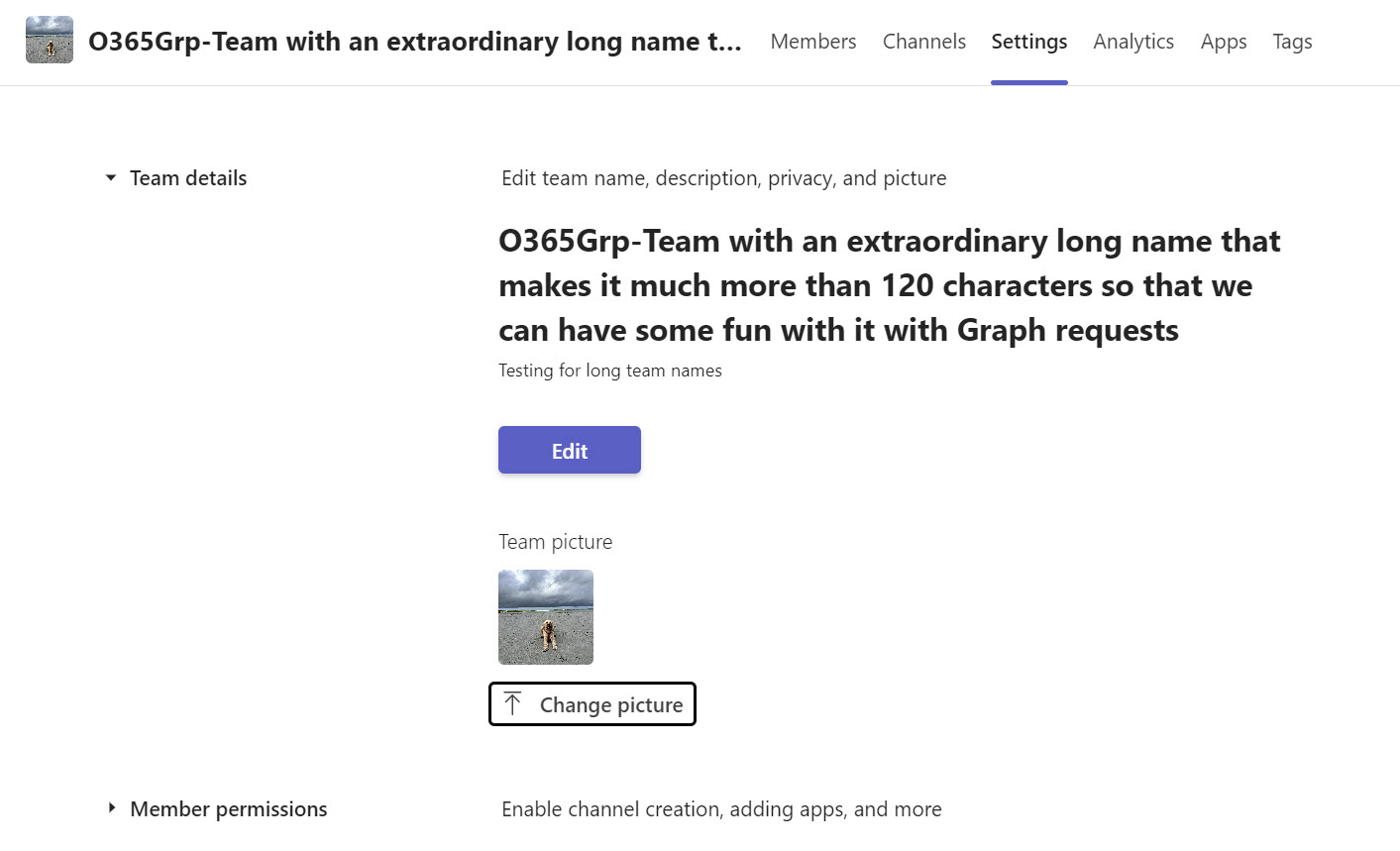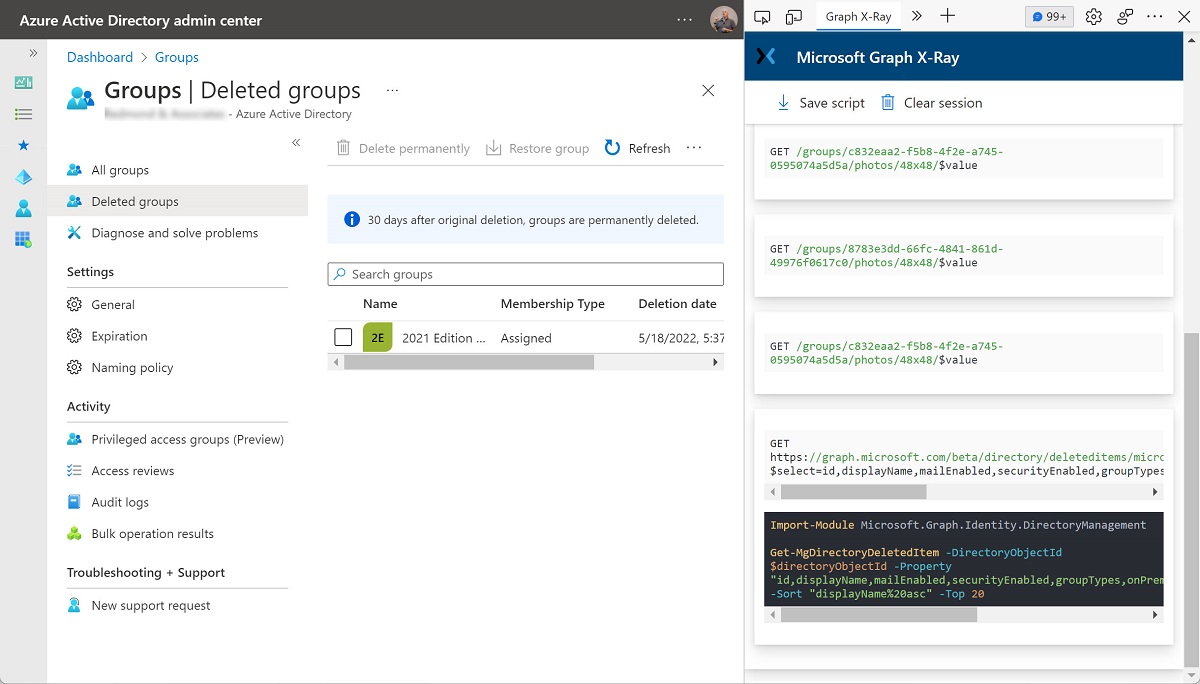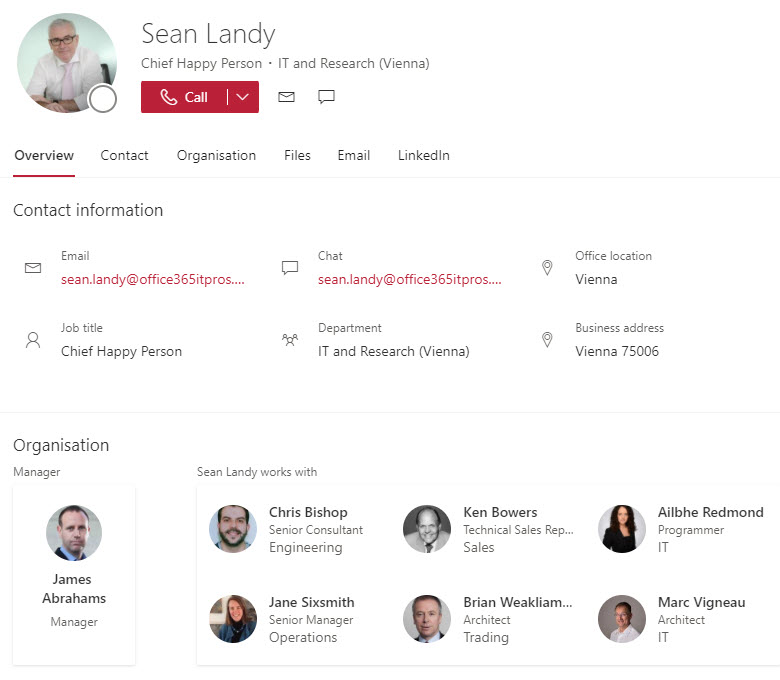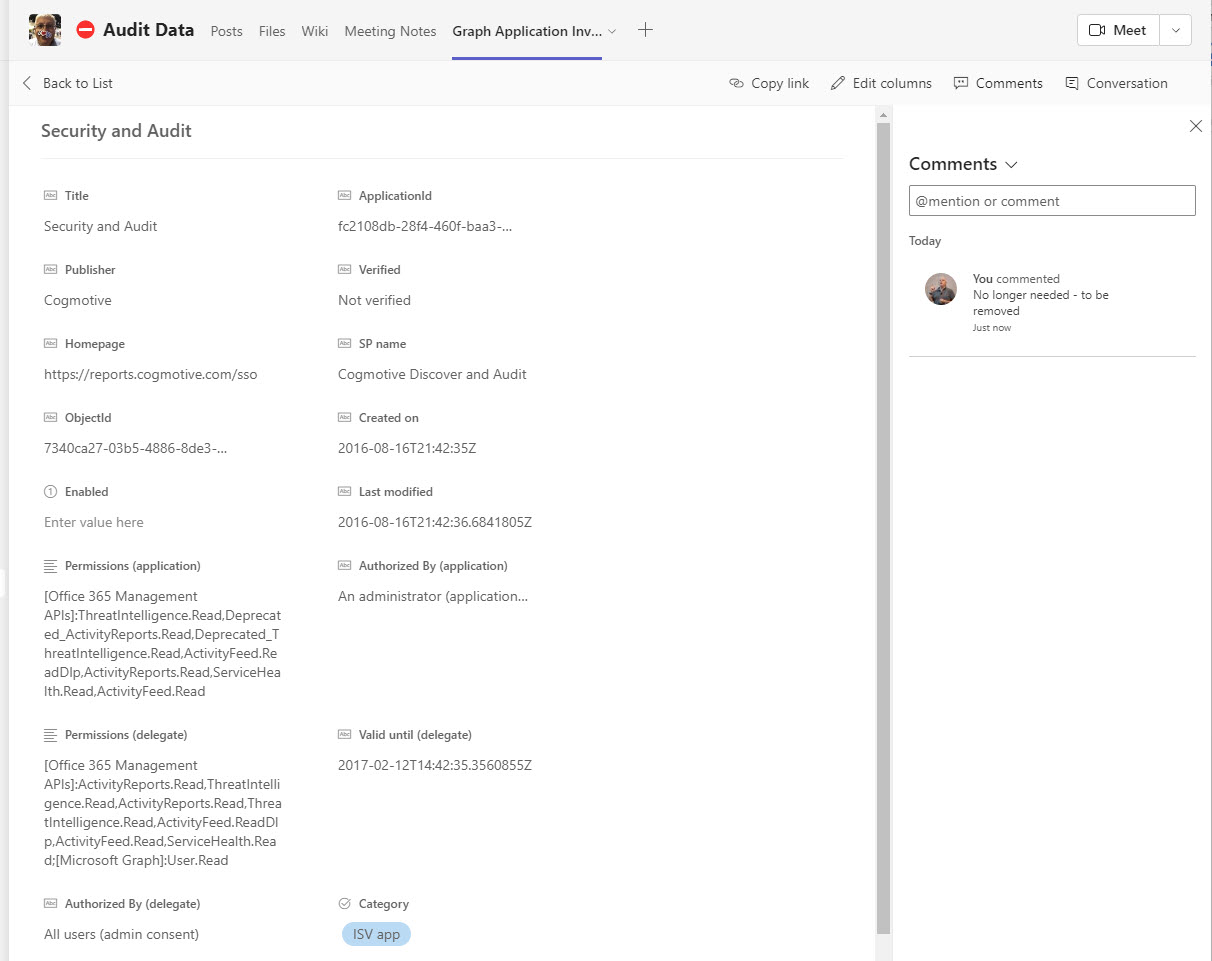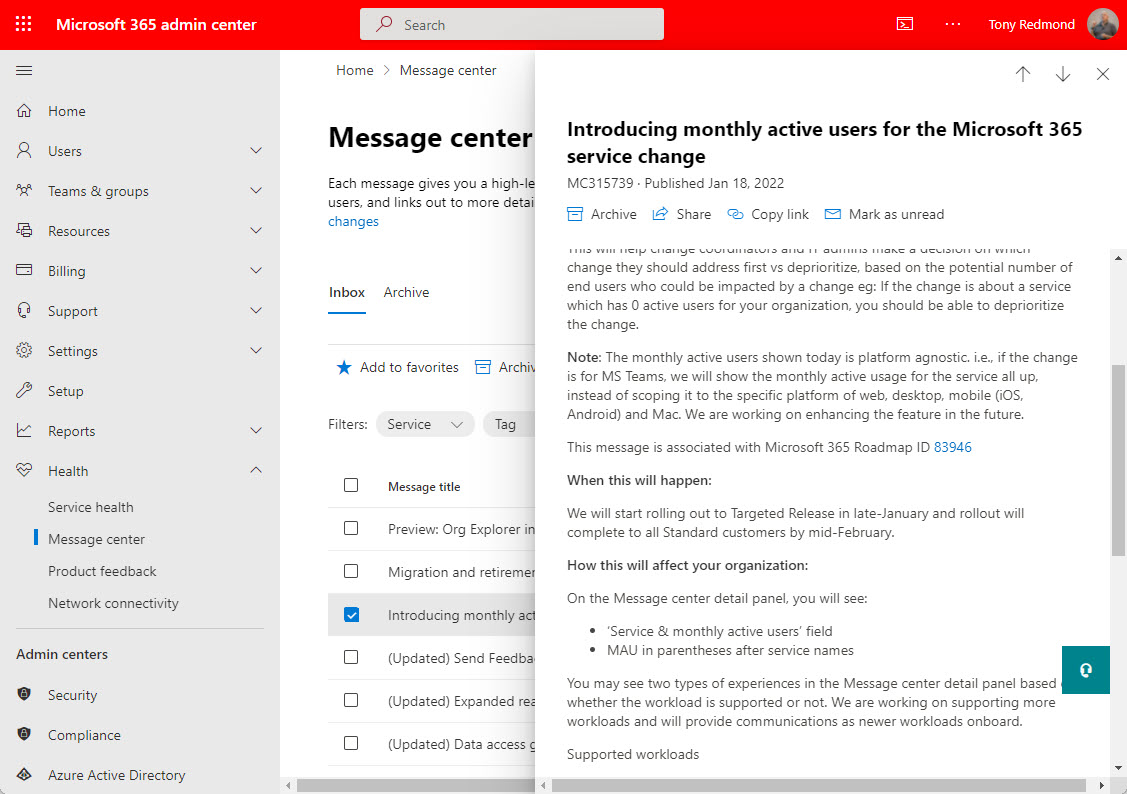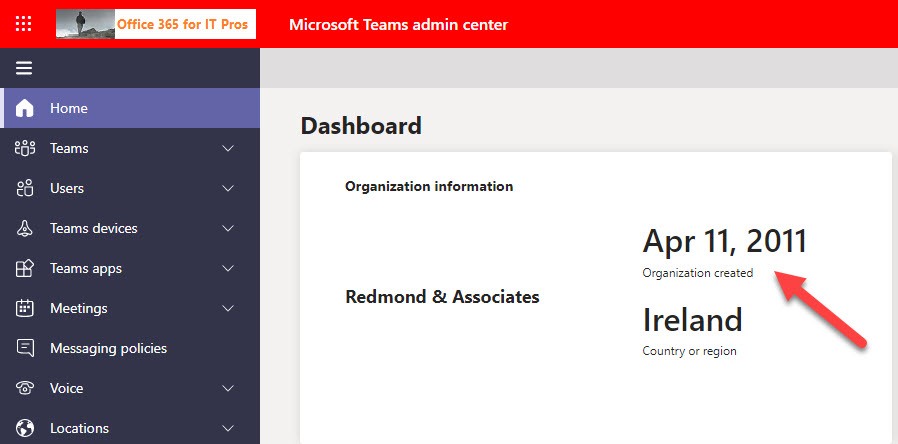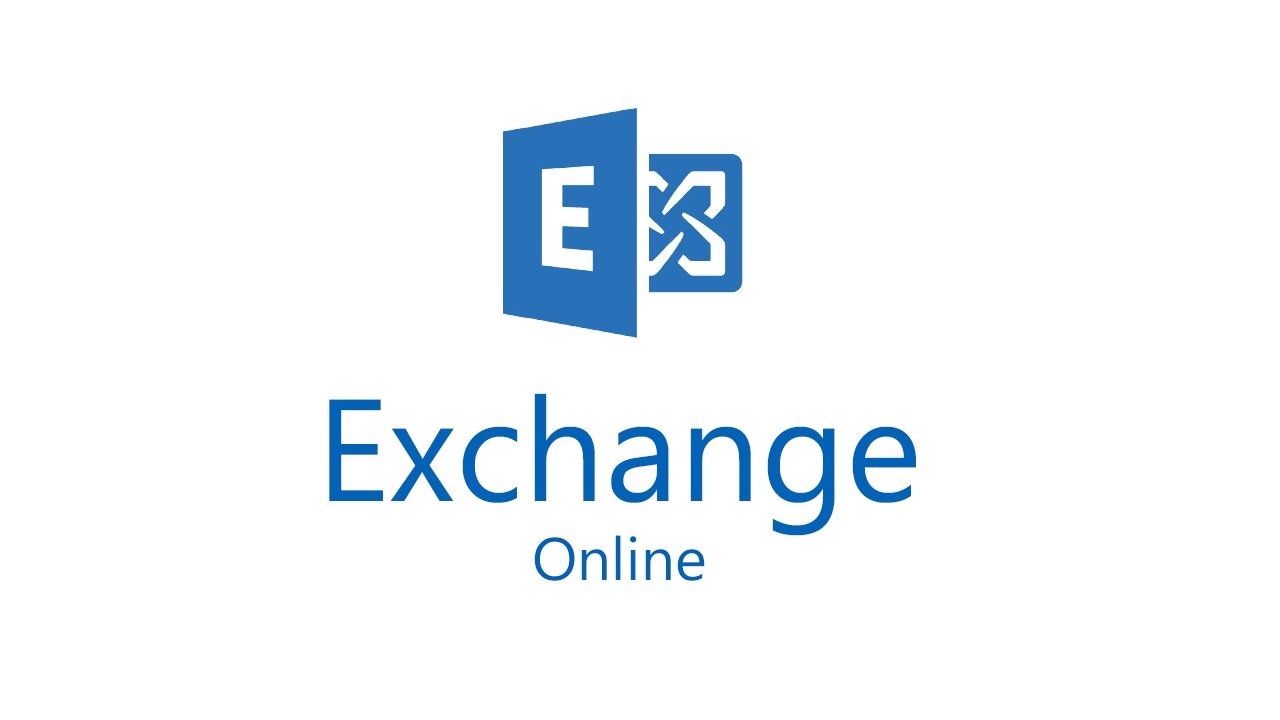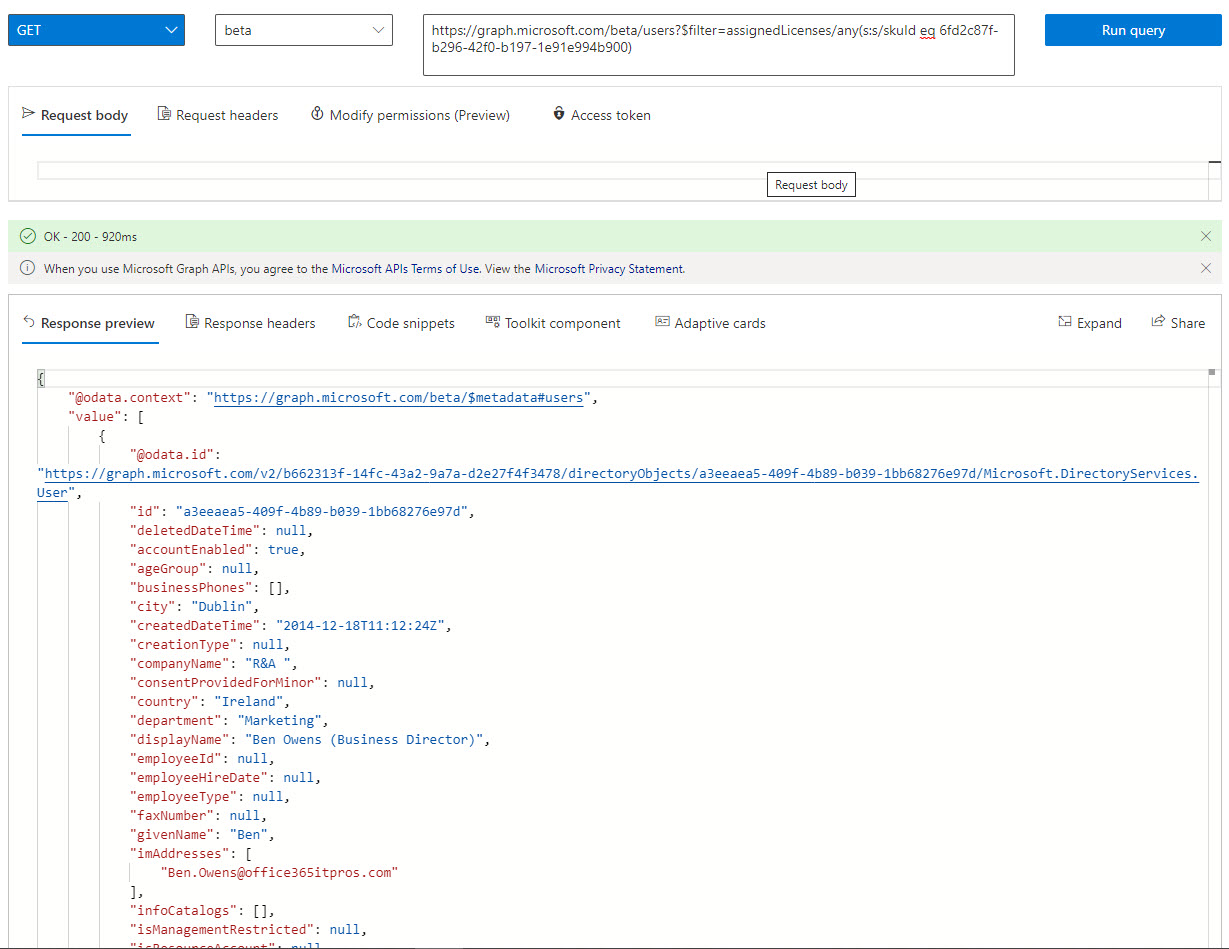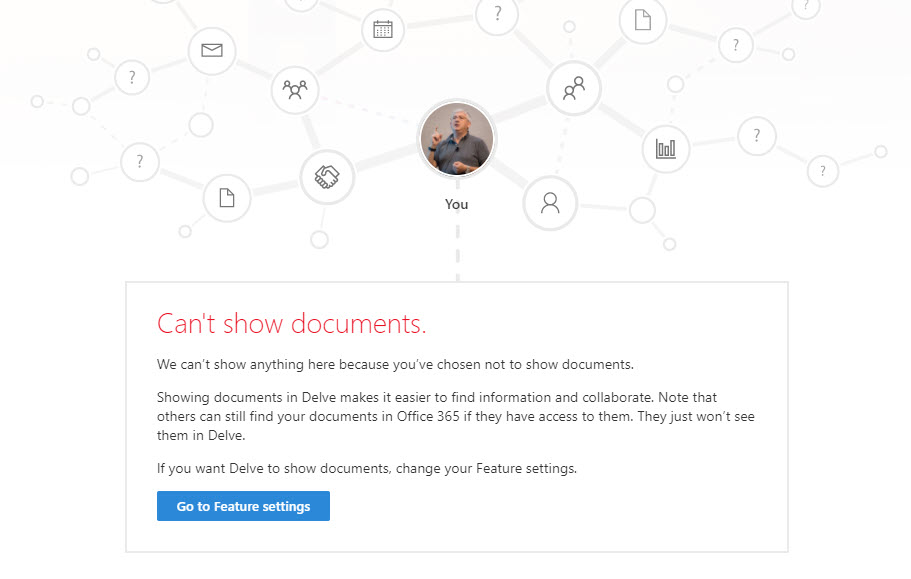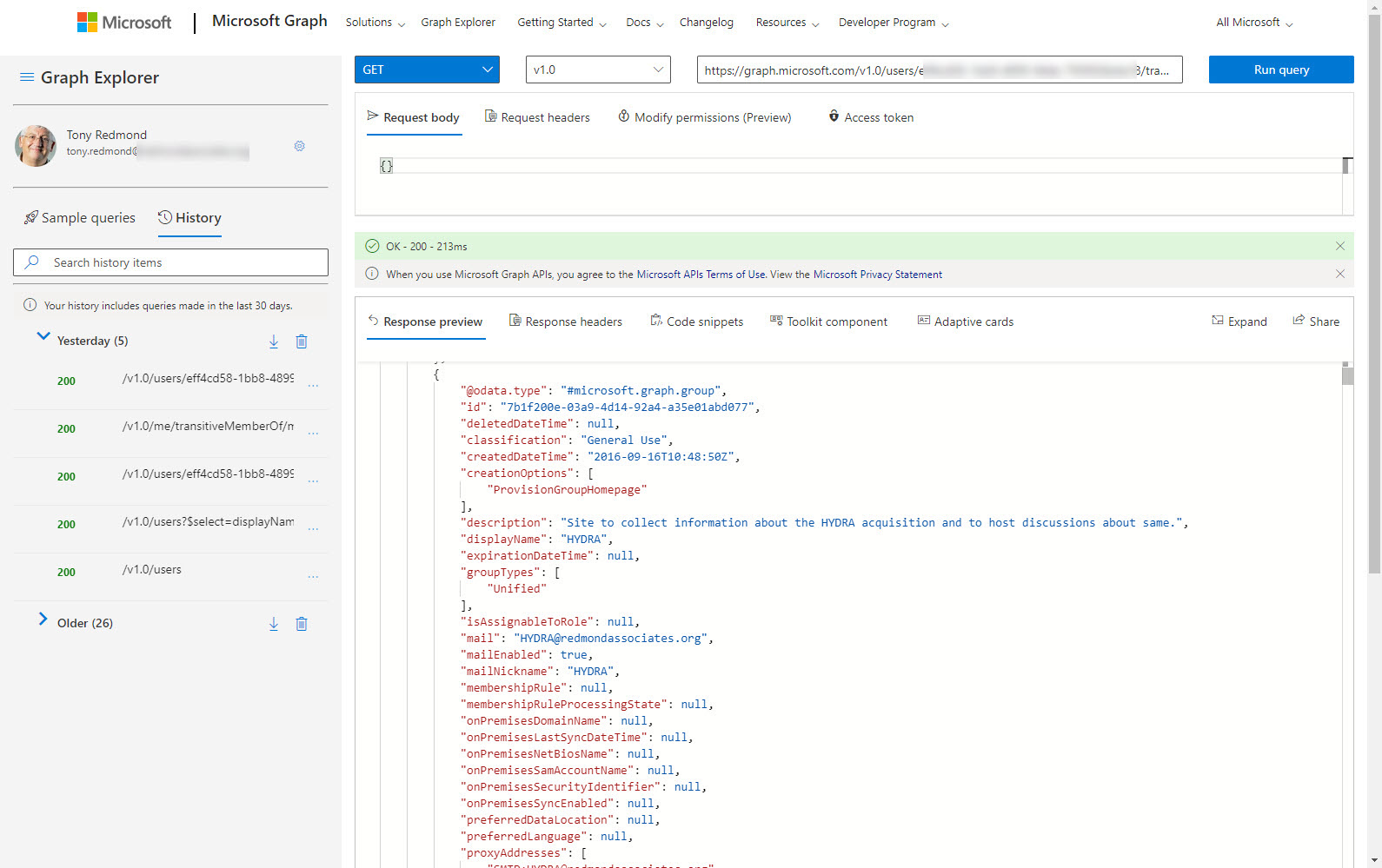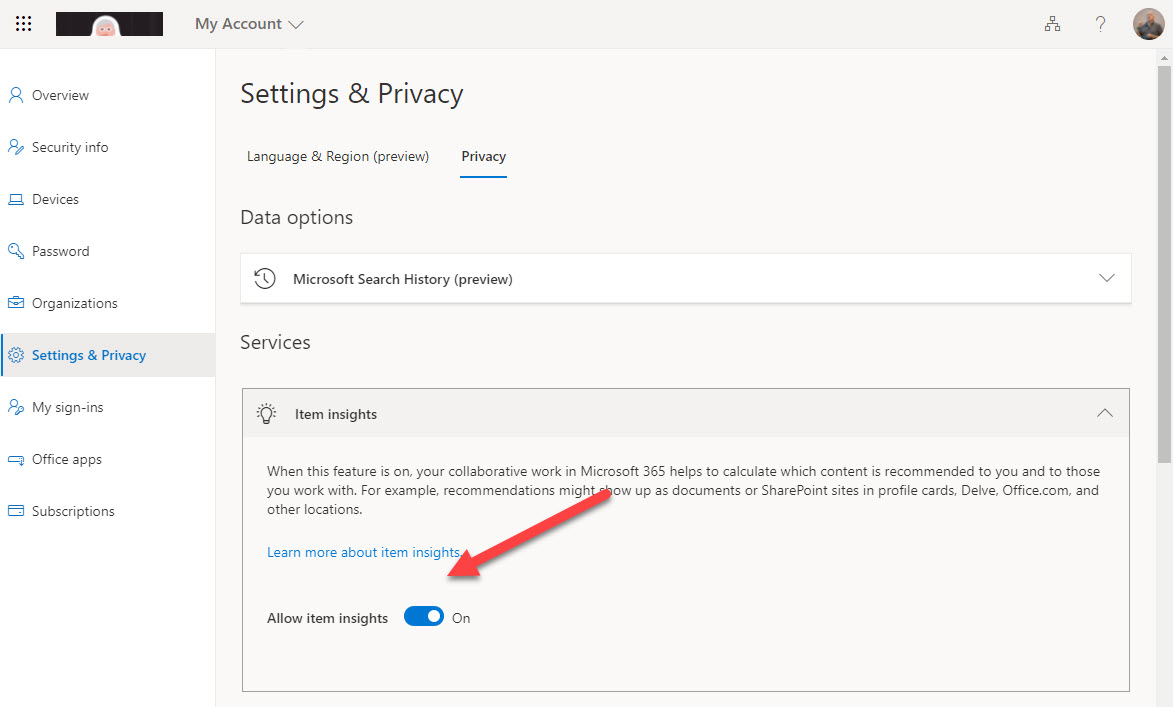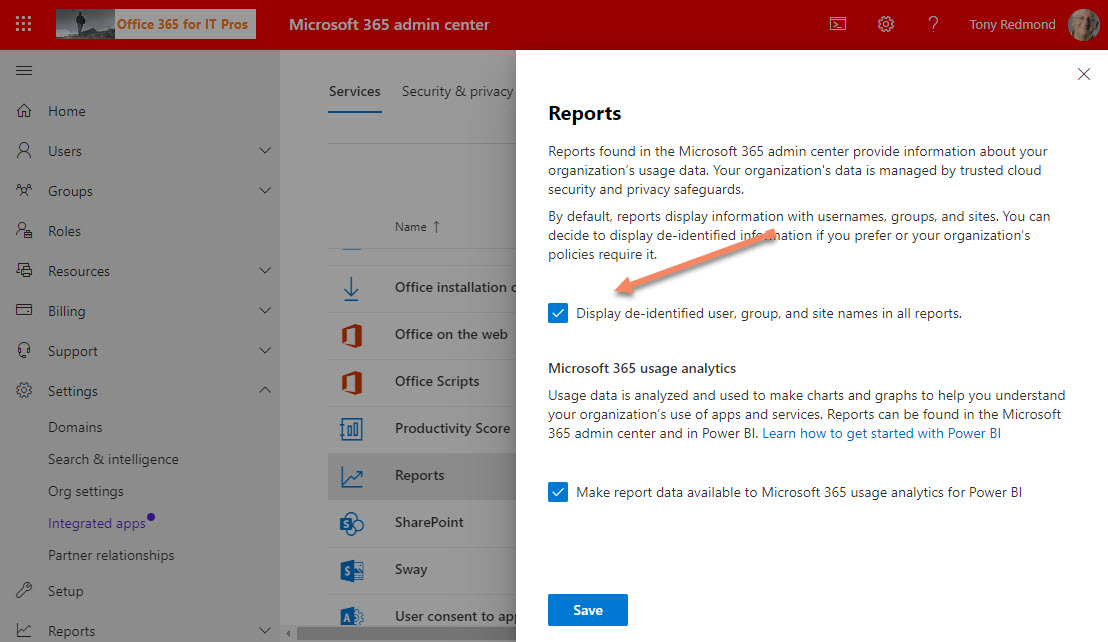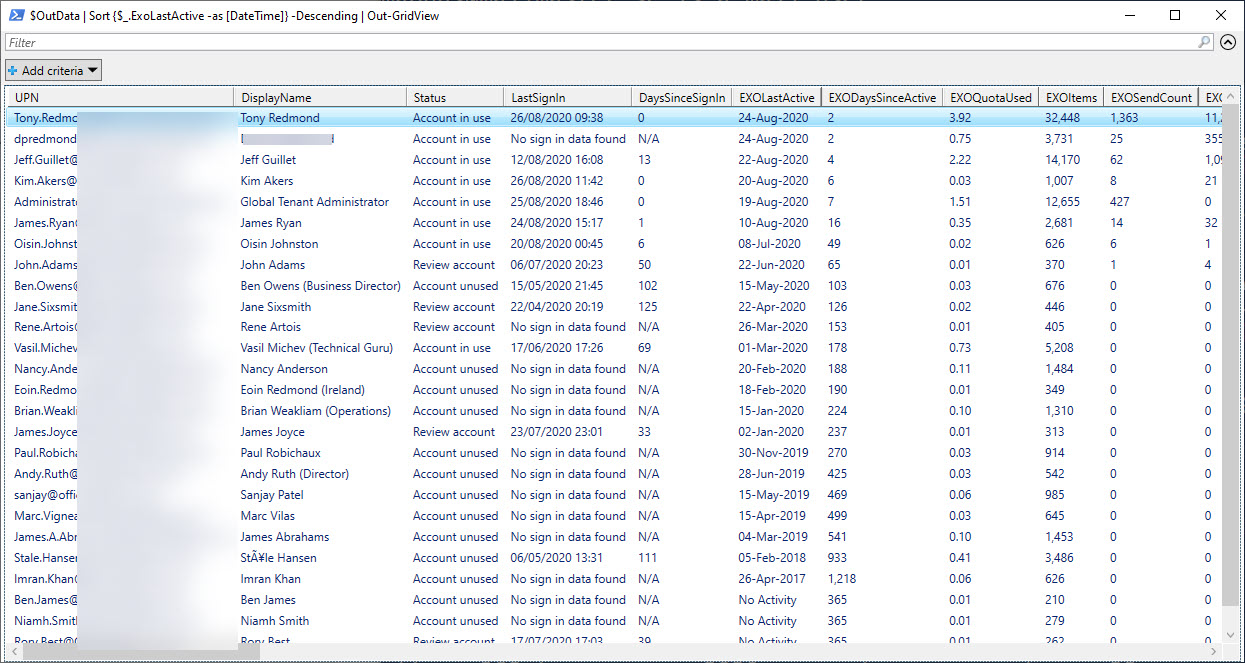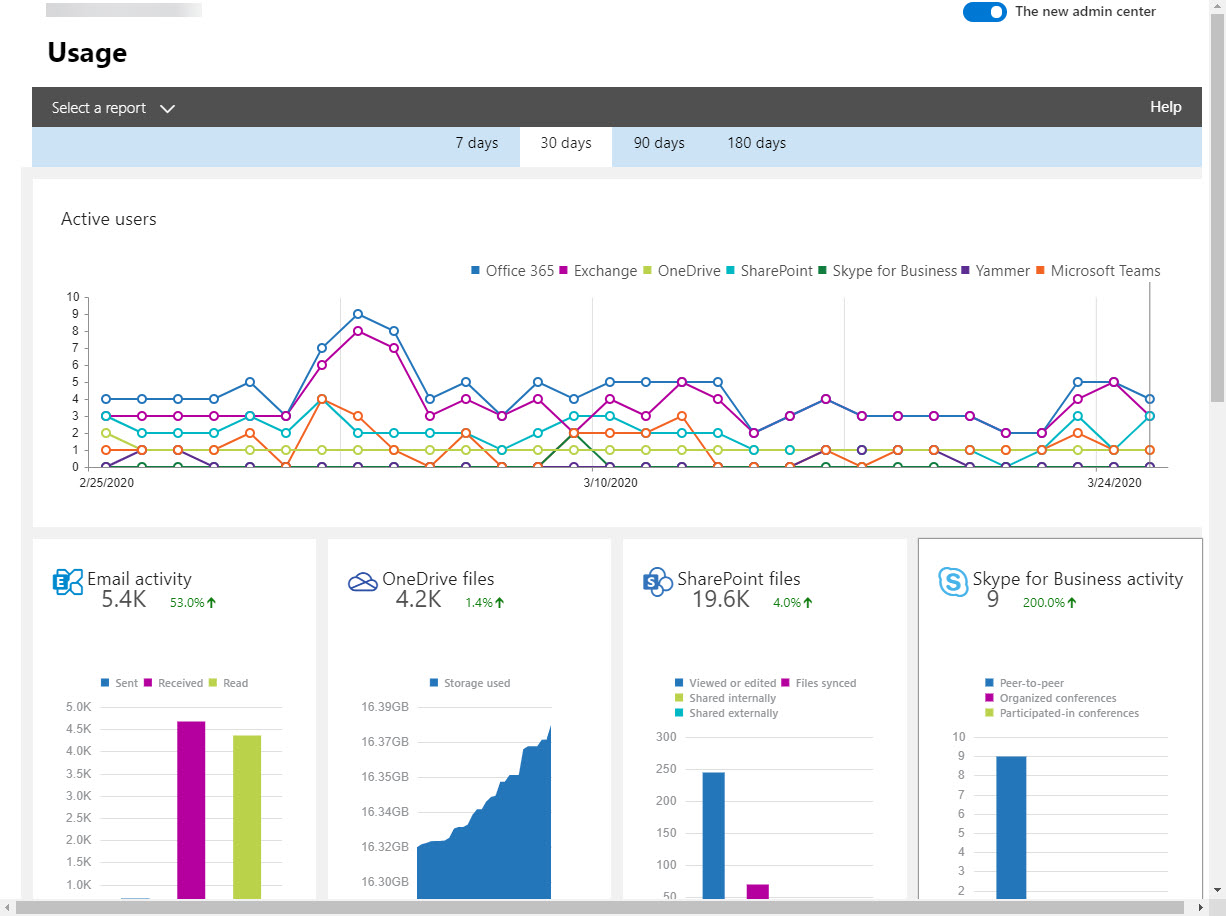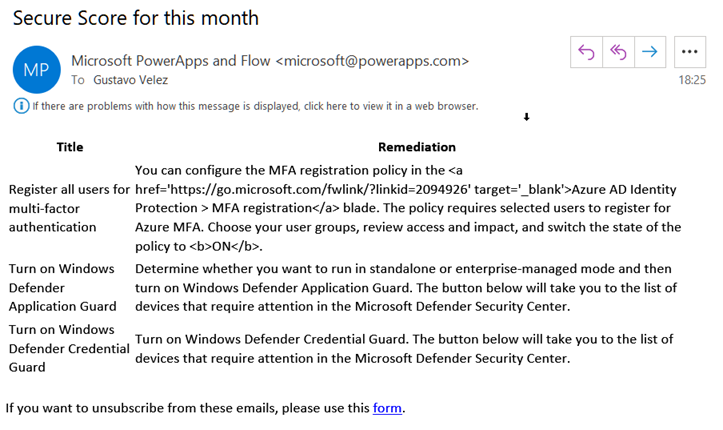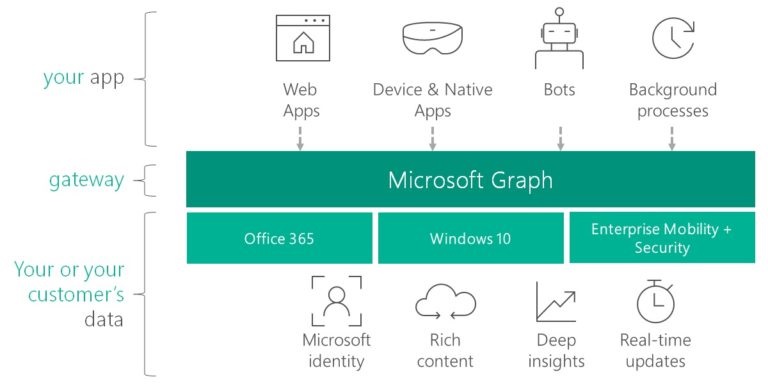In MC877369, Microsoft announced the availability of three Copilot usage reports in the Graph usage reports API to track usage of Copilot for Microsoft 365 in the apps enabled for Copilot, like Outlook, Excel, Word, PowerPoint, Loop, etc. The data available in the Copilot usage reports isn’t very informative and you might be better off using audit records to analyze what’s happening.
Microsoft 365 group display names longer than 120 characters will cause problems for Graph API requests attempting to fetch the groups. A workaround exists, which is to make the request an advanced query rather than a regular one. But the question really should be “who needs group display names that are longer than 120 characters?”
In an unannounced move, Microsoft imposed a new limit on Graph requests using the List Users API that include the SignInActivity property. The old limit allowed a request to fetch 999 items; the new reduces it to 120 items. I’m sure that the change is made with the best possible motive, but introducing something like this without warning broke a lot of programs and scripts, and that’s just unacceptable.
A December 2 post by the Microsoft Graph development team clarifies how it plans to charge for some Microsoft 365 APIs. The three-tier model Microsoft plans to use is logical and the default will remain free access to customer data. However, the way Microsoft has communicated the introduction of a charging model for some high-capacity APIs is a model of how not to manage change.
The new Graph X-Ray extension available for the Chrome and Edge browsers gives developers an insight into how the Azure AD admin center uses Graph API commands to retrieve user and group objects. The insight is invaluable when teasing out some of the syntax needed to get work done with the Graph. It’s much appreciated.
People insights is one of the three types of insights derived by the Microsoft Graph from signals gathered from user activity in Microsoft 365 apps. Some organizations don’t like to show people insights in the user profile card, and now you can update an organization setting to remove people insights from the card for all or just some users.
Access tokens are an important part of accessing data using modern authentication through APIs like the Microsoft Graph. But what’s in an access token and how is the information in the access token used by PowerShell when the time comes to run some Graph queries in a script? In this article, we look behind the scenes to find out what’s in the JSON-structured web tokens issued by Entra ID.
Service principal sign-in data from Entra ID is now accessible through a Microsoft Graph API. This means that you can analyze sign-in data to locate problem apps and remove old or unwanted service principals from your Microsoft 365 tenant. It’s time for spring cleaning!
Message center notifications for service changes posted to the Microsoft 365 admin center will include monthly active user counts for affected workloads. That sounds good, until you realize some of the downloads incurred by depending on the Microsoft Graph Reports API as the source of user data. Still, it’s better than nothing and a welcome advance.
Finding the age of a Microsoft 365 tenant isn’t an important administrative operation. However, understanding how to retrieve this information (if asked) is an interesting question, which is why we spent several hours playing around with PowerShell and the Microsoft Graph to figure out how to answer the question. It’s the kind of in-depth analysis we do all the time to build content for the Office 365 for IT Pros eBook.
A new List Teams API is available in the beta version of the Microsoft Graph. In time, the new API might replace the existing methods used to fetch sets of teams for processing. For now, there’s no need to update any code as we wait for Microsoft to fully bake the new API. Maybe it will be more performant and functional in the future!
Microsoft is removing TLS 1.0 and 1.1 from Microsoft 365. This has been well flagged, but tenants might not understand the impact on PowerShell scripts which send email using the Send-MailMessage cmdlet and SMTP AUTH. In a nutshell, unless you force PowerShell to use TLS 1.2, attempts to send messages via Exchange Online will fail. It’s time to check those scripts and ,consider how to move away from SMTP AUTH and Send-MailMessage.
A Microsoft October 5 announcement gives a clear signal that Exchange Web Services is on a short runway to oblivion. The first step is the removal of 25 APIs on March 31, 2022. It’s all part of the master plan to get Office 365 tenants and ISVs to move to the Microsoft Graph APIs. This is a perfectly laudable ambition but it’s complicated because of the lack of suitable Graph APIs to handle the volume of Exchange data involved in scenarios like backup/restore and migration. Teams has a new Graph Export API, but it introduces consumption metering and charging. Is a new Exchange API coming and will it use the same charging mechanism? We live in interesting times…
Understanding how to create effective queries using the Microsoft Graph APIs takes some work, especially with some of the more complex filters used to refine the data returned by the Graph. In this article, we look at how filters using lambda qualifiers work and explore some examples of these qualifiers in use.
Microsoft has replaced the controls which disabled document insights in Delve with new Graph-based settings. However, you might still have a bunch of users with the Delve settings who need to migrate to the Graph settings. In this article, we explore how the settings work and how to query the Graph to find the set of users who disabled the setting in Delve. We can then use PowerShell to add those accounts to the group of disabled insights users for the Graph-based settings.
Many PowerShell scripts which access Office 365 data could do with a speed boost. Replacing cmdlets with Microsoft Graph API calls is one way to get extra speed. In this article, we take a PowerShell script to report the memberships users have of Microsoft 365 groups and replace some important cmdlets with Graph API calls. The result is a big speed increase.
The preview of a new app governance add-on for Microsoft Client App Security gives Office 365 administrators insight into Graph-based apps. The add-on depends on information gathered from Azure AD and MCAS to generate insights about apps and their usage, including highlighting apps which are overprivileged or highly privileged. Although you can do some of the auditing yourself, the add-on makes it easier. It’s a preview, so some glitches are present.
The thoughts of using Microsoft Graph API calls with PowerShell might seem to be too much trouble, but used correctly, Graph API calls help scripts speed up and get to some data that is not reachable through a cmdlet. I have a simple four-step approach that I use to figure out if I need to include some Graph API calls. The routine works for me. Feel free to disagree.
Office 365 will see a batch of delayed features arrive during July 2021 along with two notable retirements and a new Personal Item Insights control. After going through the set of delayed features announced in the Microsoft 365 admin center, we share our list of the most important items here along with the two big retirements in the month and a new personal privacy control.
Sometimes it’s wise to give PowerShell scripts a turbo boost. This is certainly true for the Groups and Teams Activity report script, where a large amount of PowerShell processing has been replaced with speedy Microsoft Graph API calls. The result is much faster processing, which means that the script is more useful in large tenants. I still wouldn’t try to run it against 100,000 groups, but anything smaller should be OK. I think!
Anyone writing PowerShell code against Azure Active Directory probably uses the Azure AD module. In June 2022, Microsoft will deprecate the API underpinning the Azure AD module. Tenants who want to use PowerShell to create scripts to automate administrative processes will need to move to Graph API calls or use the Microsoft Graph PowerShell SDK. Either way, there’s a bunch of work to do to upgrade scripts.
The data used for Microsoft 365 usage reports comes from the Microsoft Graph. You can anonymize the data to replace references to user, group, and site names with system-generated values to protect user privacy. This works, but it reduces the usefulness of the reports by a large degree, so you should be prepared to switch to show full user data sometimes.
The latest update for the Teams admin center includes the ability to manage the permissions used by third-party apps to access data via the Microsoft Graph. The updates also include the ability to manage resource specific consent (RSC) for Teams apps. While third-party apps ate the obvious target, LOB apps created by tenants are managed in the same way.
PowerShell hash tables are very efficient at retrieving data, which is just what’s needed when thousands of Office 365 accounts need processing. Our script to analyze usage data extracted from the Microsoft Graph was turbo-charged when we replaced list objects with hash tables, all of which makes it much easier to identify underused Office 365 accounts and save some money on licensing spend.
Office 365 usage data for several workloads is available through the Microsoft Graph. A PowerShell script is available to grab Graph data and use it to figure out if accounts are in active use. V1.2 of GetGraphUserStatisticsReport.PS1 is available in GitHub and should be better performing when processing thousands of accounts.
It’s easy to retrieve storage data for SharePoint Online sites with PowerShell, but it’s faster with the Graph. Some disadvantages do exist, but it’s nice to have a choice. TheGraph is faster, especially with large tenants, but the SharePoint Online PowerShell cmdlets can deliver more data.
Writing code to illustrate a point sometimes falls into the trap that things don’t work so well when you scale things up. Take Graph calls for instance. Code that works well with 100 teams isn’t so good with 4,000. The solution is to keep on telling the Graph to fetch data until it’s all in the safe hands of PowerShell, and then process it.
The Microsoft Graph gives programmers a RESTful interface to Office 365 data. Flow allows even non-programmers to automate tasks by combining building blocks of Office 365 data and actions. Put the two together and you can generate some impressive results. In this example, we combine Graph and Flow to create some nagging emails to admins to encourage them to improve the tenant’s Secure Score.
The Microsoft Graph developers and some other folks inside Microsoft have launched a new series of short blog posts to help people become acquainted with the Graph. It’s a nice idea, and one that’s worthwhile to read.

